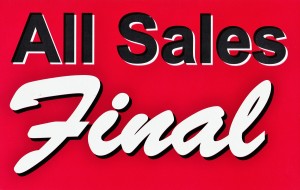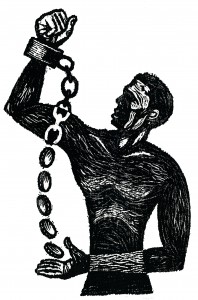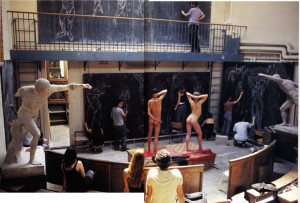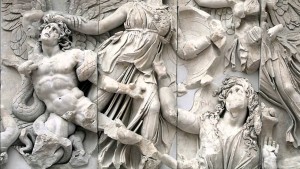
Action and Standing a Round
If I understand Emerson correctly, his allegory of photography contends that, while photography may look like shopping at a flea market, it’s really more like standing a round at the bar.

If I understand Emerson correctly, his allegory of photography contends that, while photography may look like shopping at a flea market, it’s really more like standing a round at the bar.

But in a world where inequality has been increasing and where the fastest growing jobs are mainly the lowest paying ones, why should we be inspired by a vision that instead of promising to pay people better, promises only to make sure that the badly-paid are not disproportionately black or Latino? And that men are just as fucked as women? It’s easy to see the attractions of bourgeois anti-racism and bourgeois feminism for white women and people of color seeking to establish themselves among the (shrinking) bourgeoisie. From their standpoint we should be as concerned that black, Latino, or female-owned businesses are relatively poorer than their white or male counterparts as we are with the growing power of employers to obtain labor on increasingly exploitative terms.

The deeper appeal of reparations talk for its proponents is to create or stress a sense of racial peoplehood as the primary basis for political identity. This movement’s psychological project is grounded on two beliefs: first, that rank-and -file black people suffer from an improper or defective sense of identity, and second, that an important task of political action is to restore or correct racial consciousness that the legacy of slavery is supposed to have distorted or destroyed.

This doesn’t mean that gay marriage isn’t a good thing, and it doesn’t mean that we shouldn’t be vigilant in fighting all kinds of discrimination. It just means that fighting discrimination has nothing to do with fighting economic inequality, and that the commitment to identity politics has been more an expression of our enthusiasm for the free market than a form of resistance to it. You can, for example, be a feminist committed to equal pay for men and women and also be committed to equality between management and labor but, as the example of everyone who’s ever campaigned against the glass ceiling shows, you don’t have to be and aren’t likely to be.

From the beginning of Picasso’s career to the end, he depicted life-size figures. An essential aspect of this way of working is made curiously prominent in Boy Leading a Horse—because an effortful, first moment of learning reinstalls itself in an uninvited fashion. Recall that the palmar grasp affords a longer range but simultaneously deprives the artist of his ability to maintain the hand in a flowing continuous movement across the surface (as evident in the photograph of the École).

Take, for example, Turrell’s description of one of his recent ganzfeld chambers at the Henry Moore institute in Halifax, England: “It could induce an epileptic fit. You could really render someone useless if you choose to. The Henry Moore Institute had to have a neurologist from London…. It is serious business from that point of view. But there have been art pieces, by Christo and Serra, that actually killed people. I don’t in any way intend that…. It is invasive, closing your eyes will not stop this…”

Is damaged art still art? There are two ways to approach the question. The first is ontological; it is a question of how much a

What should the revolutionary poet be doing, when crisis – whether it be economic, social, environmental, or for that matter, aesthetic – appears increasingly frequent, inevitable, and irreversible? Or to ask the question in a slightly different form: What poetic forms do these conditions of crisis seem to require?

Art as such does not pre-exist capitalism and will certainly not survive it, but rather presents an unemphatic alterity to it: art is not the before or after of capitalism, but its determinate other.

Poets and critics have had some trouble discussing Vanessa Place’s piece Tweeting Gone with the Wind. I have a suggestion. Why not say that her piece is poorly written?

nonsite.org is an online, open access, peer-reviewed quarterly journal of scholarship in the arts and humanities. nonsite.org is affiliated with Emory College of Arts and Sciences.